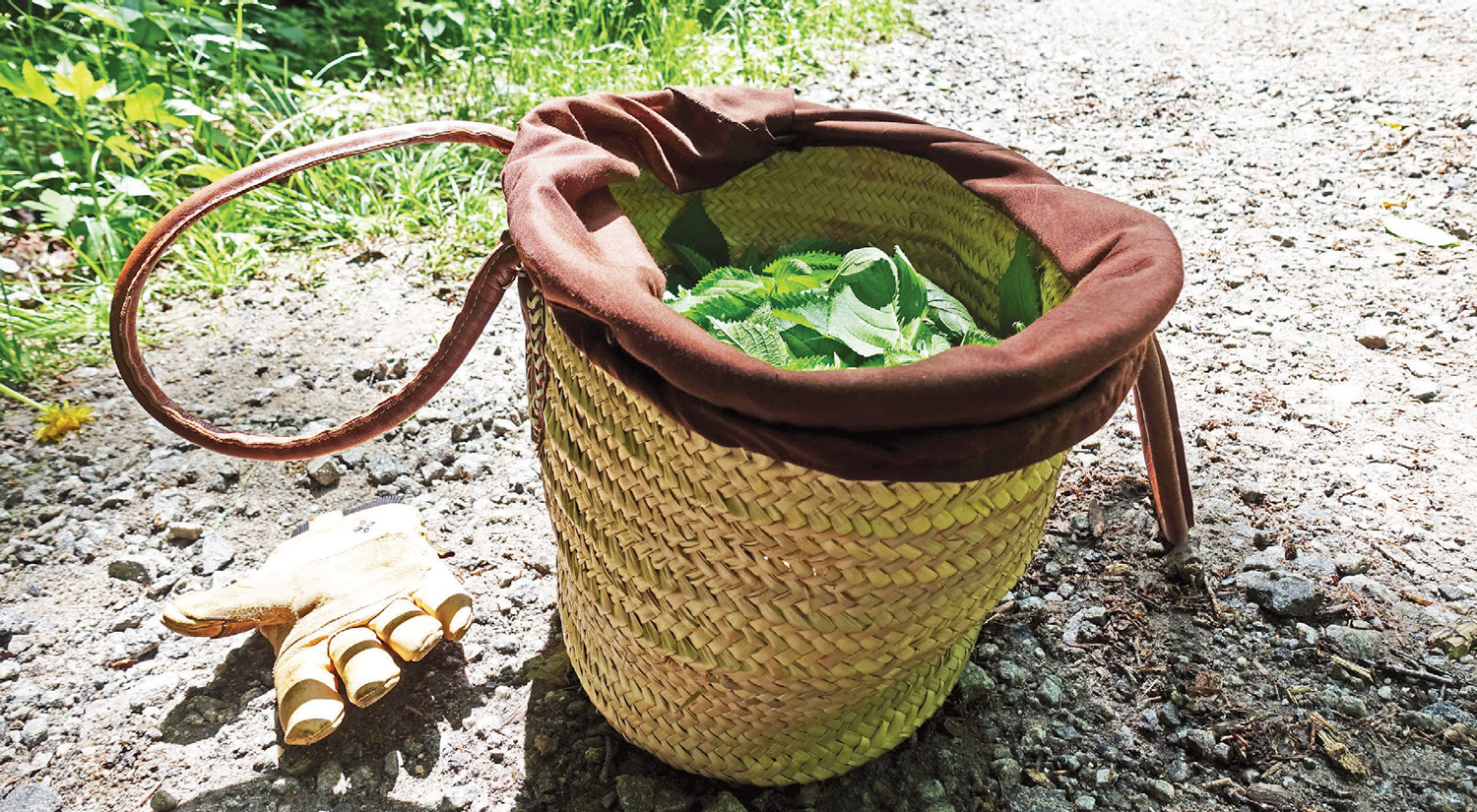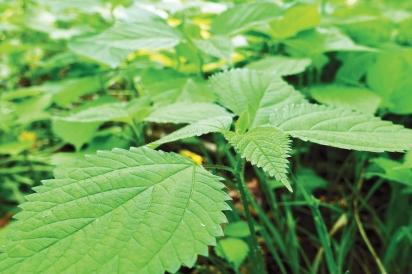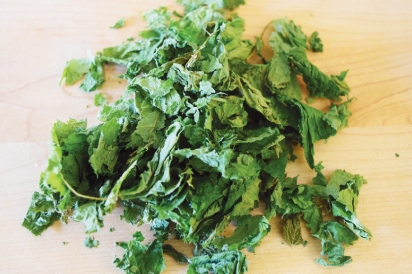Notorious Nettle
More Than Just Its Sting
The common names of certain plants tell you in no uncertain terms just how important it is to keep your distance. Poison ivy, poison hemlock, and deadly nightshade all declare themselves to be exactly what they are – dangerous. But not all scary names are created equal, and perhaps the best example of this is one of my favorite wild edible plants, which also happens to be one of the most nutritious leafy greens in the woods: stinging nettle.
Stinging nettle (Urtica dioica) and wood nettle (Laportea canadensis) are common herbaceous plants found around the Northeast and are both plants that you won’t enjoy encountering with bare skin. The first time I walked through a stand of nettle while harvesting greens from a friend’s garden bed, I thought I’d accidentally touched an electric fence. It’s that sort of quick, surprising jolt that has earned stinging nettle and wood nettle – which both sting even though the latter has a more innocuous name – their botanical notoriety. That sting is unpleasant, to be sure, but while poison ivy often has negative effects that can stick around, and poison hemlock and deadly nightshade are both extremely toxic if ingested, the quick sting and sometimes itchy rash of nettle generally don’t last long. Considering the benefits of including the plant in your diet, the positives far outweigh any fleeting negatives.
Do you like spinach? Then I’d wager you’ll enjoy a steaming plate of sauteed nettle with garlic and olive oil. Are you a fan of a mild cup of green tea? Then pour yourself a mug of steeped nettle. Enjoy knowing that your food is chock full of nutrients? Watch as nettle blows other produce out of the water on that front. Are you an avid camper who likes having leafy greens at your fingertips without having to pack them in? Then step right up, because I have a widely available wild food for you!
Each early growing season I return to my regular nettle spots – the disturbed soil along hiking trails and roadsides, and on the edges of yards and gardens – armed with long sleeves and pants, garden gloves, and a basket, ready to harvest this tasty forageable. The tiny hairs on fresh nettle leaves and stems will sting if they come into contact with your skin, but the ability of the plant to sting goes away upon cooking or drying. This means that nettle leaves cannot be eaten fresh, but make an amazing cooked side dish, soup headliner, egg add-in, and herbal tea infusion.
Stinging nettle and wood nettle grow in different spots, with wood nettle appearing in shadier locations and stinging nettle enjoying full sun. On the Cape, I have stumbled across stinging nettle in the aforementioned garden bed and on the outskirts of farms, and wood nettle along the road in shady mid-Cape neighborhoods. The two related plants look quite a bit different from one another, but both grow on upright stems that can reach several feet tall. Both plants bear coarsely toothed leaves, but stinging nettle’s leaves are significantly smaller than those of wood nettle and are less round than their woodsy counterparts.
If you’ve done your due diligence to research nettle identification and want to make sure your knowledge is spot-on, brush some leaves of the plant along the inside of your wrist to test for the sting. The discomfort won’t last long, and you will know that you have found the right plant. To help alleviate the pain of any stings, look for jewelweed or curly dock, which often grow close by, and rub some crushed leaves on the affected area. The leaves of both plants have long been used as topical remedies to counteract the nettle’s sting.
To harvest nettle, pinch off the top few inches of young leaves, only picking from plants that have not yet begun to flower. After the nettle begins to flower, all reliable sources indicate that the plant should no longer be eaten. The timing on this can vary by specific area and the weather that year, but I’ve harvested leaves from mid spring to very early summer on plants that have yet to produce any flower buds. I generally take the first few layers of leaves and stems, moving through a patch as I go. If I’m using the nettle immediately, I will prepare the green in most of the same ways I would enjoy cooked spinach, though nettle is quicker to wilt. I often use tongs to add the leaves to whatever I am cooking to avoid touching them. Saute these leaves in oil or butter as its own vegetable side, simmer and puree a batch for a creamy and vibrant soup, throw a handful into pasta and heat through until it wilts, or add some into breakfast eggs or a savory dinner quiche. Nettle often grows in abundance and is a common perennial plant, so if I’ve discovered a particularly large patch I often dry bunches of leaves in a dehydrator on a very low temperature until they are brittle, and then store them in a glass jar alongside my other dried herbs and teas. I will also quickly blanch and freeze fresh nettle and store it in quart bags that I pull out for use throughout the colder months.
One of my favorite ways to use nettle leaves is as an easy addition to my camping meal – thrown in with rice, couscous, and breakfast eggs. I am often able to locate nettle growing wild while out on the trail, giving me a fresh green that I didn’t have to pack in, but I will also bring along small bags of dried nettle, which has almost no bulk or weight, to be used as tea or a meal add-in. Nettle packs a punch of vitamins C and A, protein, and iron to whatever I’m eating, not to mention a pop of bright green and a lovely light flavor.
So don’t let the sting of our neighborhood nettle scare you. Pull on your long pants, gather up your garden gloves, and get to picking. You’ll likely find that you’ve added a new favorite to the growing number of wild foods in your pantry. Just remember that when it comes to nettle, you’ll enjoy it far more on your plate than on your skin.
*NOTE: Always consult with trusted experts and refer to foraging books and field guides for 100% positive plant identification before consuming any wild plant. As with harvesting any wild plant, and particularly ones like nettle that grow in commonly sprayed areas, take particular care to collect from spaces you know to be chemical-free. Never pick any wild plant from protected spaces. Integrate new foods into your diet in small quantities to gauge any dietary and allergy sensitivities, and consult with a doctor if you have any questions or concerns about specific health issues or medication interactions.








